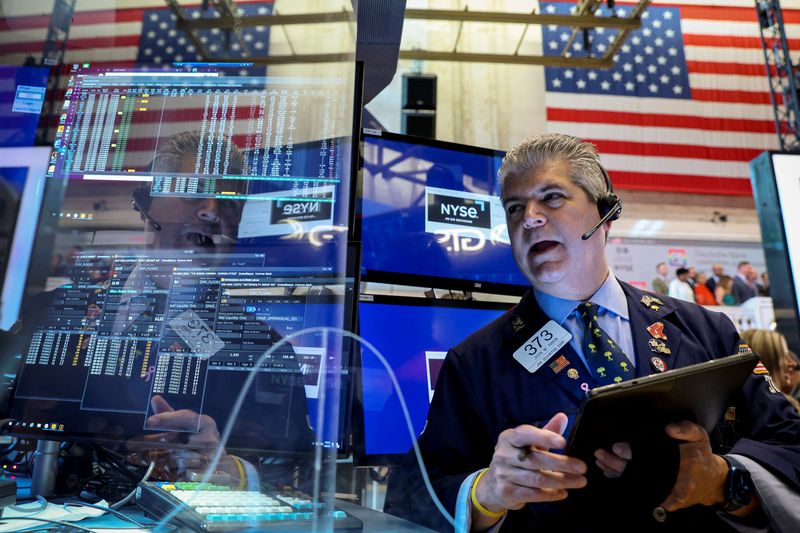By David French
NEW YORK (Reuters) - Wall Street put a seesaw day behind it to close higher on Wednesday, as investors digested new clues on the U.S. central bank's approach to rate policy and its inflation fight detailed in the minutes from the latest Federal Reserve meeting.
After a brutal selloff in global equity markets in the first half of the year, nervous investors are keeping a close watch on central bank actions as they try to assess the impact of aggressive rate hikes on global growth.
They got their latest data point on Wednesday afternoon, when the minutes of the June 14-15 policy meeting detailed how the U.S. central bank was prompted to make an outsized interest rate increase. The minutes were a firm restatement of the Fed's intent to get prices under control to address stubborn inflation and concern about lost faith in the central bank's power.
The 0.75 percentage-point rate increase which came out of the meeting was the first of that size since 1994. According to the minutes, participants judged that an increase of 50 or 75 basis points would likely be appropriate at the policy meeting later this month.
Prior to the minutes' publication, investors had been pricing in another 75-basis-point rate increase at the upcoming July 26-27 gathering, meaning the fact that both 50 basis points and 75 basis points remained on the table pointed toward the Fed acknowledging the impact of its rate rises on the economy.
The minutes reflected participants' concern about rate increases having the potential for a "larger-than-anticipated" impact on economic growth.
"I think people are heavily focused on the terminal rate of what the Federal Reserve's increases are, and the 50-75 debate just points towards where you end up," said Jason Pride, chief investment officer of private wealth at Glenmede.
He noted that a 50 basis-point hike would point toward a terminal rate of 3%, while 75 basis points indicated a peak of 3.25% or 3.5%. At 3.5% or above, the likelihood of recession is about 50%.
Prior to the publication of the minutes, all three Wall Street benchmarks had endured a seesaw session, and while there were further swings between positive and negative territory in the moments after the 2 p.m. EDT release, markets built solid gains for the rest of the day.
The Dow Jones Industrial Average rose 69.86 points, or 0.23%, to 31,037.68, the S&P 500 gained 13.69 points, or 0.36%, to 3,845.08 and the Nasdaq Composite added 39.61 points, or 0.35%, to 11,361.85.
Eight of the 11 S&P subsectors closed higher, with utilities and technology leading the way. The biggest outlier was the energy index, which slipped 1.7% as crude prices fell to a 12-week low on recession fears. [O/R]
Elsewhere, Uber Technologies (NYSE:UBER) Inc and DoorDash Inc fell 4.5% and 7.4%, respectively, after Amazon.com Inc (NASDAQ:AMZN) agreed to take a 2% stake in Just Eat Takeaway.com's struggling U.S. food delivery business, Grubhub.
Rivian Automotive Inc gained 10.4% after the electric-vehicle maker's deliveries nearly quadrupled as it ramped up production.

Volume on U.S. exchanges was 11.31 billion shares, compared with the 13.08 billion average for the full session over the last 20 trading days.
The S&P 500 posted 2 new 52-week highs and 29 new lows; the Nasdaq Composite recorded 20 new highs and 109 new lows.